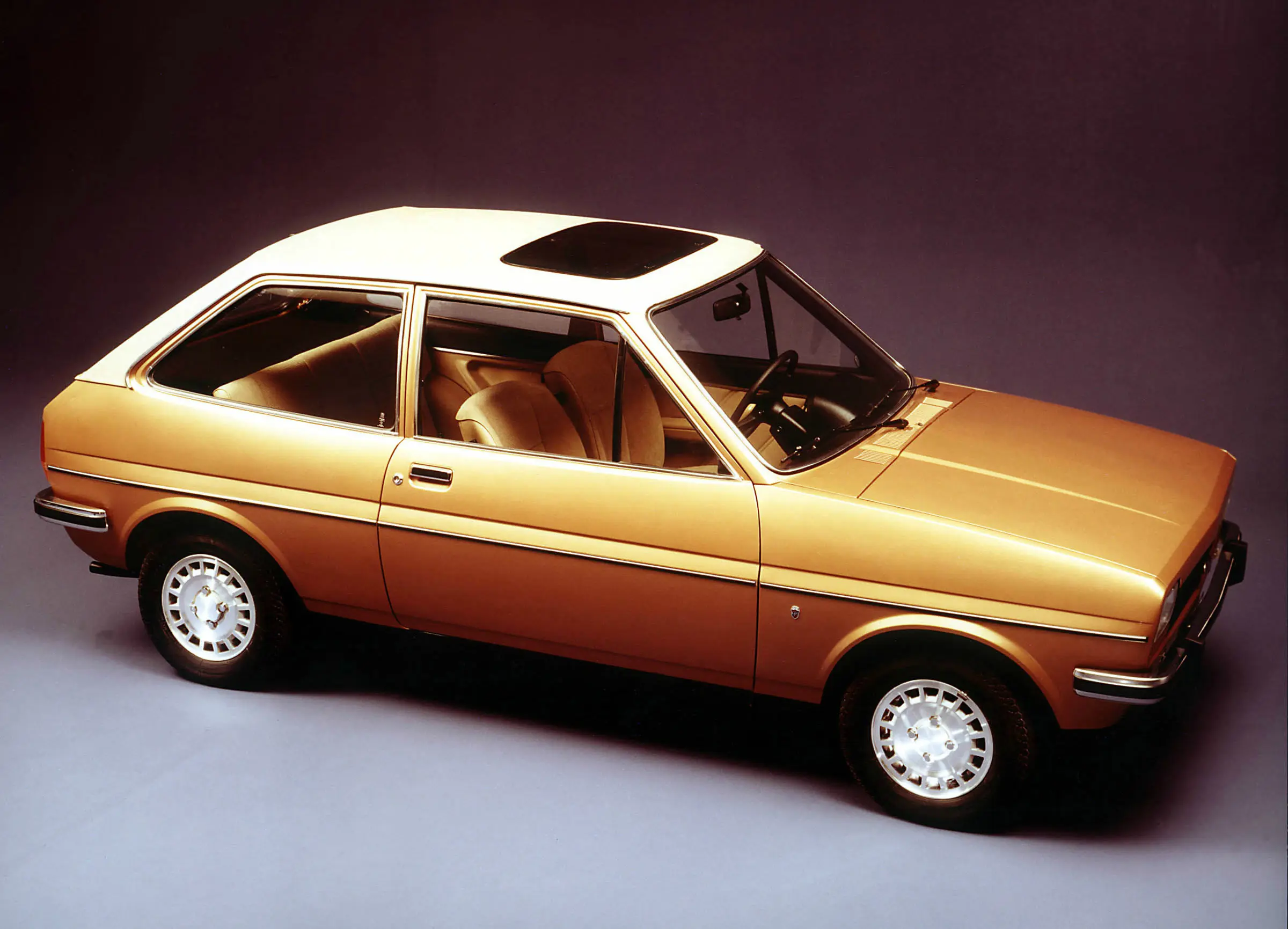TOP FIVE GHIA-BADGED FORDS
29 January 2024
When Ford acquired complete control of the Turin design house Carrozzeria Ghia in January 1973, the result was a sea change for their British flagship models. Aspirational motorists craved the car with the shield badge instead of the previous 'Executive' versions. And here are the five pioneering Ghias:
Granada Mk. I
It is March 1974, and Ford GB has unveiled "a luxury car in a class of its own". The price is £2,891, £332 more than the GXL, but, according to their PR film, it offers "unsurpassed smoothness and quietness" - https://www.youtube.com/watch?v=vom99PeHB64. Plus, seats upholstered in "rich Beaumont cloth", doors capped in "real Belgian walnut", automatic transmission, a push button radio and "an electronic digital clock". Car grumbled it offered few advantages over the GXL aside from the "dress-up gear" but concluded that the Ghia was "a comfortable and well-balanced saloon with svelte looks. It rides and handles well and conducts itself with a good deal of silence and relaxation". Plus, for the company executive who aspired to a Buick Riveria but could not contemplate the fuel bills, there was the Granada Ghia Coupe for £3,574.
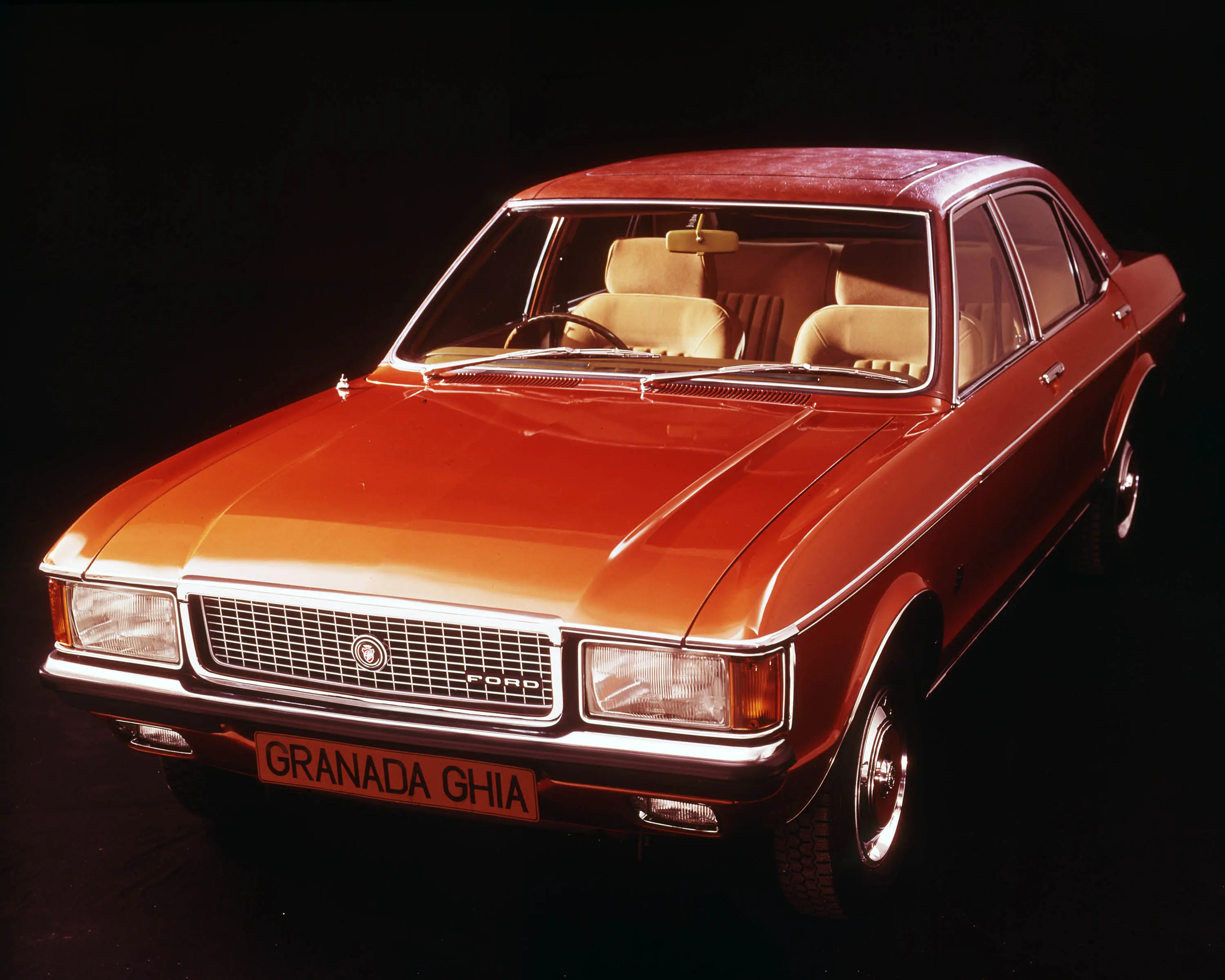
Capri II
On the 1st May 1974, sales commenced of a Capri for drivers who were so smooth they could afford two boxes of After Eight Mints per week. The 2-litre Ghia cost £2,395, while the 3-litre model was £2,609 – very reasonable sums for a car with a vinyl top, Rialto nylon upholstery, a sliding roof and alloy wheels. This made the flagship Capri considerably cheaper than the £3,240 Simitar GTE with the same 'Essex' V6 engine. Motor Sport believed the Reliant had an image "which makes the difference between respect and diffidence from hotel doormen, car park attendants and what-have-you (and, of course, the neighbours)". But most Capri Ghia owners were too busy posing outside of that chic local wine bar to care.
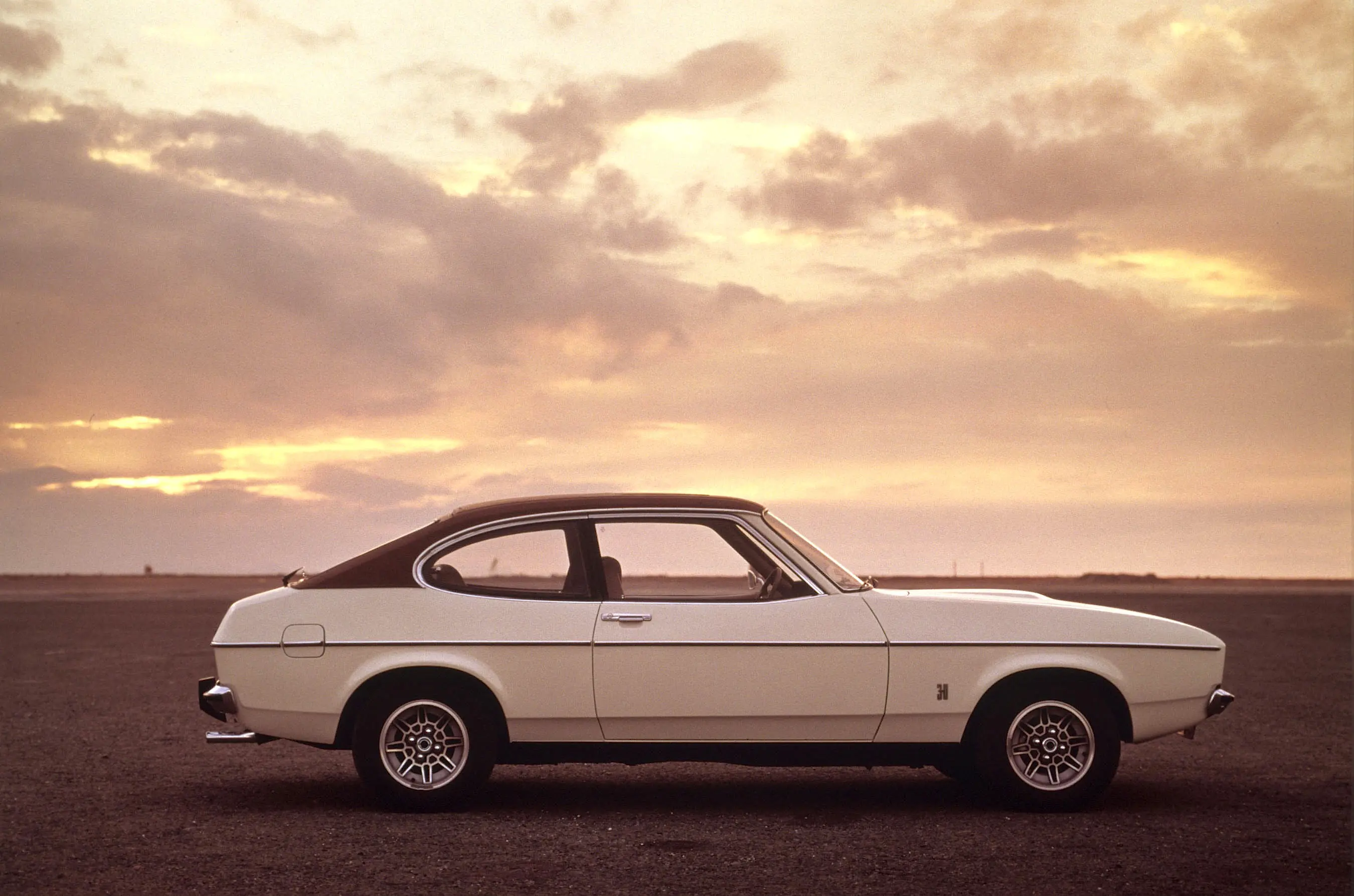
Escort Mk. II
The Escort Mk. II – with the "slimmer, leaner, look" - made its bow in early 1975, and in place of the 1300E, ambitious sales representatives contemplated the Ghia. Here was "The Escort with everything"; namely "Colour-keyed pile carpet", tinted glass, a vinyl roof (of course), "Savannah" cloth trim, and "Real wood veneer" on the fascia. To put such luxuries in context, the Escort Mk. II 'Base' was devoid of hazard warning lamps, a brake servo and a heated rear window. Buyers had a choice of two or four doors and 1.3 or 1.6-litre engines. The price of a 1600 Ghia was £2,124.90, making it more costly than the Avenger GLS at £1,823 – but then the Hillman lacked that all-important shield badge.
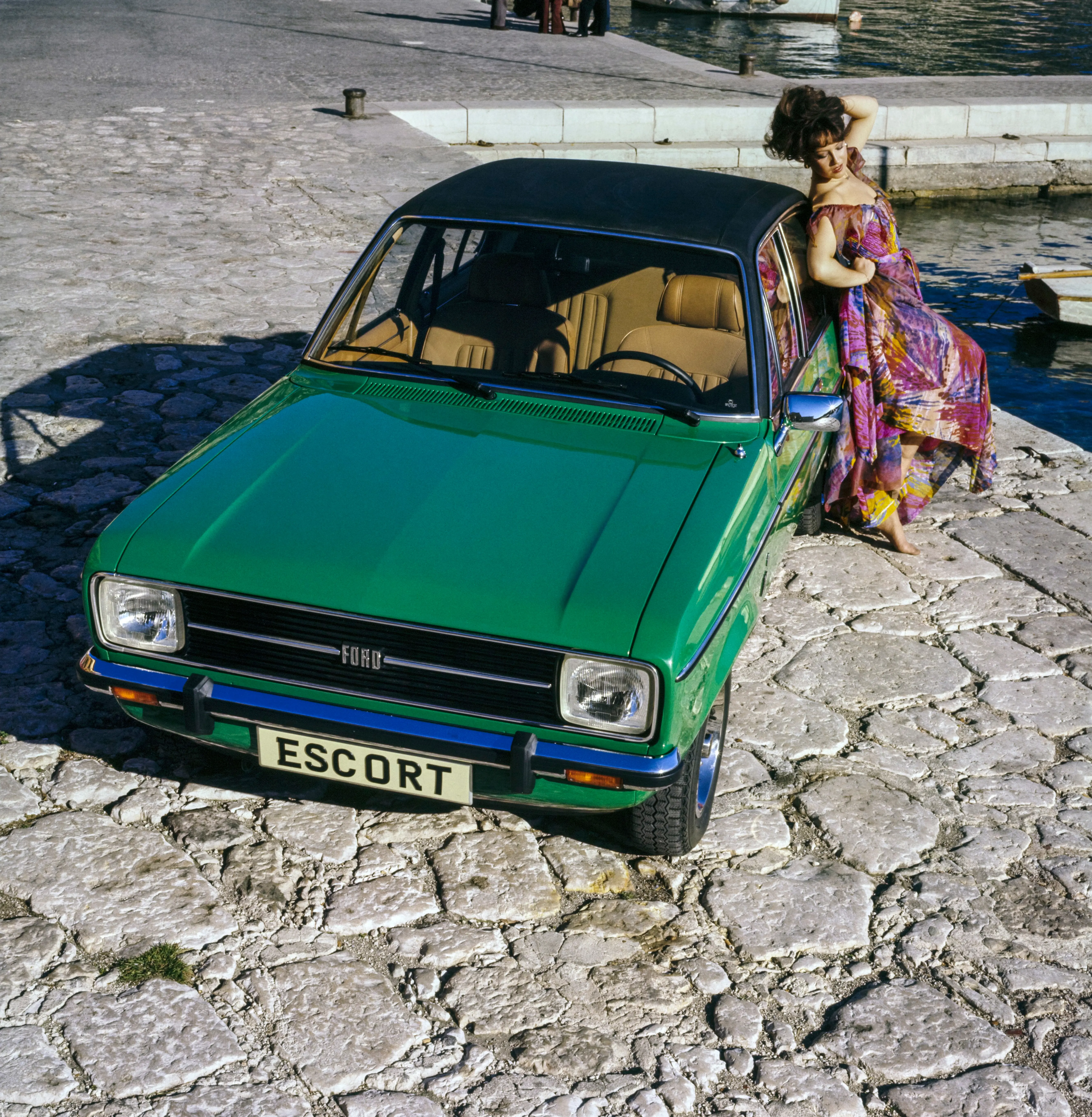
Cortina Mk. IV
When UK sales of the latest Cortina began in late 1976, former 2000E Mk. III drivers eyed the Ghia Mk. IV with considerable interest. True, it cost £3,208.47, but how could you put a price on "reclining seats with valances trimmed in 'Crushed Velour' with 'Verona' inserts, or a "shag pile carpet"? An Autocar test of the 2nd October 1976 found the Cortina Ghia "a car that drivers will readily take to, and that in itself (let alone several other virtues) will make the salesman's job an easy one".
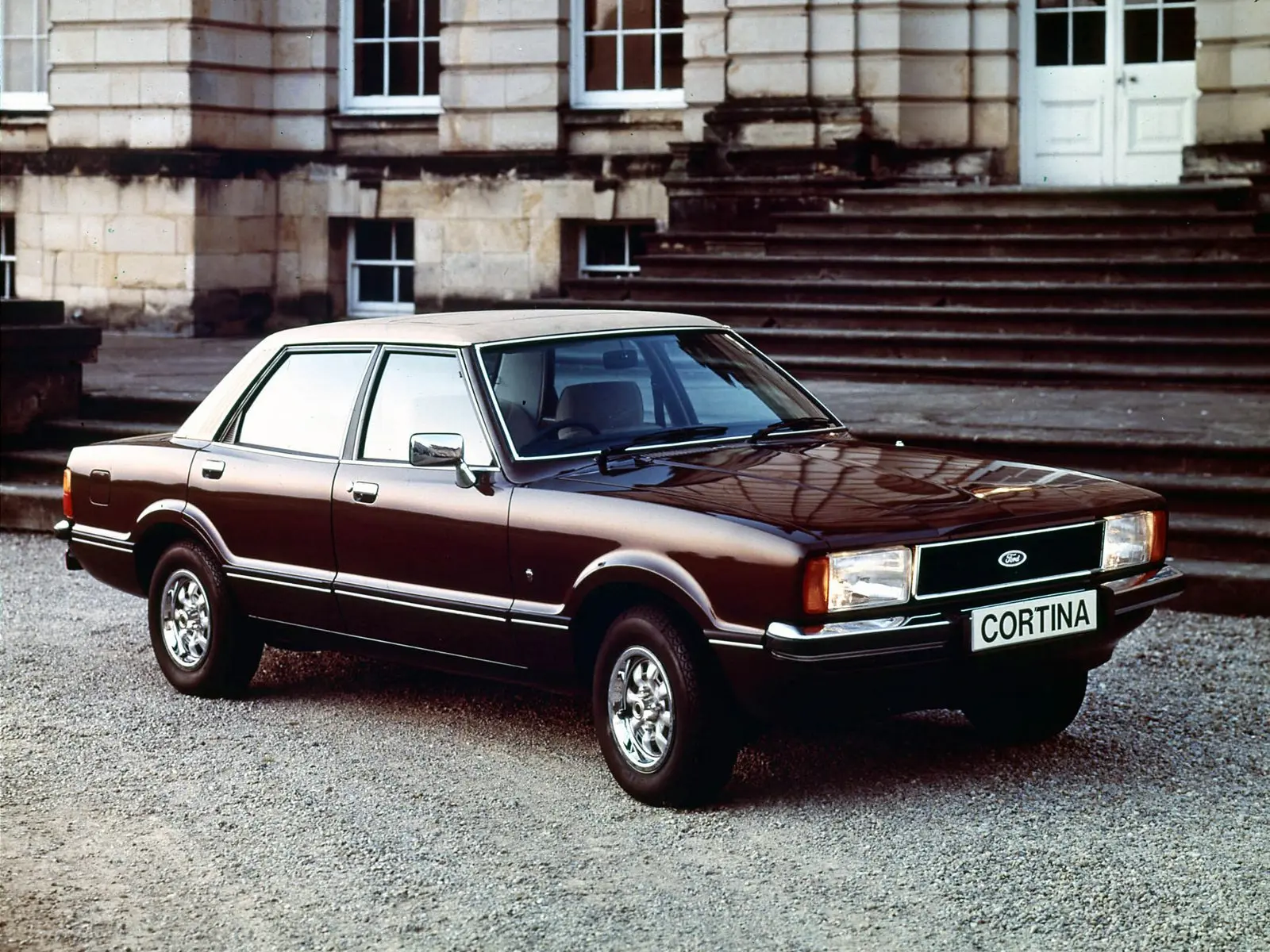
Fiesta Mk. I
British sales of the Fiesta commenced on the 2nd February 1977, and the Ghia represented the line-up's "luxury side" with its "Mahogany effect instrument binnacle" and "Ford MW/LW push button radio". By contrast, the Base model even lacked fresh air vents and a rear parcel shelf as standard. The 950 Ghia was £2,657, the 1100 was £2,757, and Motor Sport found the top-of-the-range Fiesta "a beautifully appointed small car, tastefully trimmed with rosewood and velour, as luxurious as its grandfather, the Granada Ghia". And what discerning motorist could resist that "Verona and Crushed Velour" seat trim?
